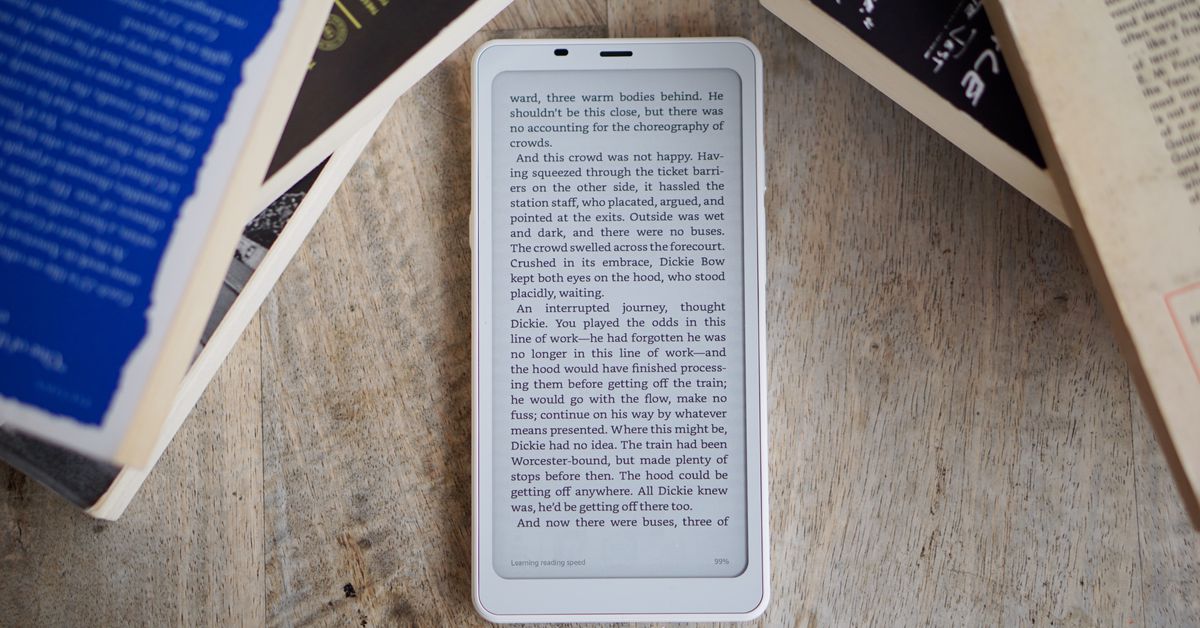The Boox Palma 2 remains a Boox Palma. That’s the best and worst thing about it. Just over a year after Onyx released its first $279.99 smartphone-sized e-reader—a device I love and use virtually every day—the company has released its successor. And it is, in every meaningful way, exactly the same.
On one level this is fine. Good, even! The whole appeal of the Palma is based on its simplicity. By delivering a device that’s about the size of a smartphone, with access to all the apps in the Play Store and an E Ink screen that’s easy to view and takes days to drain, Onyx has found a winning combination . For anyone looking for a way to easily read books, documents and other things from the Internet, there’s really nothing like it. For me, it became not just a reader, but also a way to play music and podcasts and even take quick notes, without having to wade into the chaotic swamp of my phone.
My biggest concern with the original Palma was simply how long it would last. It ran on an old chip and Android 11, both of which were woefully outdated even when it launched. The Palma 2 has a newer chip and Android 13, so you can probably expect it to continue working and receiving security updates for at least a few years. I wouldn’t count on anything else, though: Onyx is much better at spitting out new devices than updating existing ones.
About that new processor: Onyx calls it a “faster octa-core CPU,” and I absolutely cannot tell the difference. It surpasses the previous model, especially in graphics tasks, but during use I did not notice the improvement anywhere. Apps still open a little slower than I’d like; Turning pages works fine, but occasionally taps don’t register; God help you if you ever try to play a game or watch a video. I’m not really bothered by the lack of performance upgrades, as “fast” isn’t the intention here. But to put it in perspective, the original Palma benchmarks as a solid mid-range phone from 2017, and the Palma 2 tests as a solid mid-range phone from 2019. Google’s latest Pixel phones roughly triple the scores of the Palma 2. Boox has upgraded the Palma, but only from a real, Real old phone to just a very old phone.
Everything else about the Palma is the same, for better or for worse. The 6.3-inch E Ink Carta screen still looks good and the plastic casing still feels quite thin. It still has 6 GB of RAM and 128 GB of storage, both sufficient for the purposes of this gadget. The 16-megapixel camera works fine for scanning documents and QR codes, but otherwise still takes crappy photos. The power button is slightly larger than before and now has a fingerprint reader for easier security, which is nice, but a bit slow and a bit finicky, and do you even need a passcode on a Palma? (I don’t have one. Maybe I should.) My Palma 2’s battery lasts four to five days on a charge, just like the old one.
I’m torn between the Palma 2 being exactly what I wanted and a bit of a missed opportunity. There’s so much more Onyx could do with this thing. It could have added a SIM slot and turned the Palma into a truly minimalist smartphone. It could have closed the huge gap between the glass and the screen, improved the materials and created an object worthy of that $280 price tag. It could have refined Palma’s take on Android, cleaning up the settings and removing unnecessary built-in apps to make things even simpler. Or skip all that, throw away the camera, downgrade the storage, and find a way to sell this thing for half the price.
Instead, the Palma is the Palma. If you have the latter, you definitely don’t need it. If you don’t have it, buy this one so it lasts a little longer. Maybe this device will end up like the Kindle: year after year there’s usually not much reason to upgrade, but if you break yours or leave it in a pocket in the back seat somewhere, there’s a significantly better device waiting to to replace it. And as with the Kindle, it seems that the users of the Palma will always have greater ambitions for the product than its makers.
My real hope is that the Palma will get some competition. This combination – smartphone size, E Ink screen, Android apps – isn’t particularly sophisticated or proprietary, and there are plenty of ways other companies could do better. There are a number of other options available (here’s a good Reddit thread discussing some of them), but no one, including Onyx, has done this kind of product justice yet. I’d like to see someone do it right.
Until then, the Palma 2 will do just fine. It lets me read my books and articles, store my podcasts and my music, and it makes it virtually impossible to get distracted by TikTok. Still a winning combination in my book.
Photography by David Pierce / The Verge
